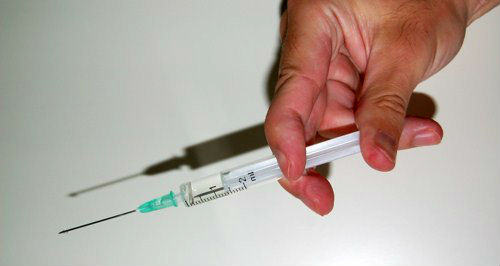Chicken pox prevention targets what is considered to be a classic childhood disease caused by the Varicella-zoster virus. Chicken pox is very common, so much so that many think of it as a rite of passage in a child’s life!
It is estimated that 9 out of 10 people have had chicken pox in their childhood. In most cases, getting chicken pox once means you will have lifelong immunity to the virus. Only in extremely rare cases will the individual contract chicken pox again.

Chicken pox is a mild infection whose symptoms include an itchy skin rash, low-grade fever, a stomach ache, malaise, irritability, and a loss of appetite. Chicken pox symptoms remain the same in children and adults, but in the case of adults, they are more severe.
This is an airborne infection, and spreads very quickly and easily through the coughs and sneezes of an infected person.
Chicken Pox Prevention – The Variety Of Options Available
Chicken pox can be prevented and controlled in different ways, some of which have been given below.
Chicken Pox Prevention Through Vaccination
Vaccination is the most reliable method of preventing chicken pox, as it is safe and effective. The chicken pox vaccine was approved for use in the United States of America in 1995.
Studies show that from 1995 to 2005, the occurrence of this disease has decreased by 90% among children and adolescents, and Varicella-related hospitalizations also declined by 88%.
The CDC or Center for Disease Control and Prevention recommends that 2 doses of the vaccine should be given to children, adolescents, and adults who have not had the disease before.
Children should receive the first dose between 12 and 15 months of age, and the second dose between 4 to 6 years. Adolescents above 13 years and adults should get the 2 doses with a gap of 4 and 6 weeks between them.
CDC also reports that 2 doses of the vaccine can be about 98% effective at preventing chicken pox. Most people who receive the vaccination don’t contract the disease. In rare instances, even if they do get chicken pox despite being vaccinated against it, the symptoms that appear are milder.
Quarantining The Infected Person
If one of the members of a household has chicken pox, it will probably spread to other people in the the household who are not already immune. The infected person must get chicken pox treatment immediately.
The infected person will be highly contagious till all the blisters and spots of the rash on the skin have crusted and fallen. That’s why isolating or quarantining an infected individual is essential for at least 5 days after the rash appears.
Unfortunately though, an infected person can spread the virus before he even seems sick and starts showing symptoms. The infection becomes contagious about 2 days before the rash appears.
The Need To Maintain Good Hygiene
When a person with chicken pox coughs or sneezes, the droplets can remain in the air for a while and later settle on the surfaces of nearby objects such as plates, glasses, toys, and clothes.
For effective chicken pox prevention, it is very important that the objects used by an infected individual be well disinfected. But disinfection isn’t a reliable method for preventing and containing the infection.
The recommended thing to do as a chicken pox prevention measure, besides quarantining the infected person, is to avoid sharing any items with him till his condition is no longer infectious.
Are You Susceptible To Chicken Pox?
Chicken pox is highly contagious, and certain people are more prone to the disease than others, as it has been mentioned below in detail. Learning about one’s susceptibility in advance can help in adopting chicken pox prevention measures in a faster manner.
The following people are susceptible to chicken pox:
- People who live or work in places where chicken pox transmission is likely and can readily occur if any person gets infected. For example, teachers of young children, family members sharing a household with an infected person, healthcare workers, hospital staff, etc.
- People who have close contact with individuals who have impaired immune systems, as these individuals are more likely to be affected by chicken pox
- Women of childbearing age (women should avoid pregnancy for 1 month following each dose of the vaccine)
- International travelers
Some groups face a high risk of infection and subsequent complications, such as:
- Newborn babies who acquire the infection through the placenta just before they are delivered
- Infants born to women who have experienced the onset of the Varicella rash 4 days before the delivery
- Children whose immune systems have been compromised
- Adults with weakened immune systems
These high risk candidates can be protected through immunization with Varicella Zoster Immune Globulin or VZIG. This vaccine first became available in 1978 when it was licensed for use by the U.S Food and Drug Administration’s Office of Biologics.
VZIG is prepared from normal, voluntary blood donors, whose bodies are found to contain high antibody levels to counter the chicken pox virus.
While chicken pox prevention is best accomplished with vaccination, other precautions and preventive measures must not be ignored, as there are high chances of the chicken pox virus spreading through infected people.